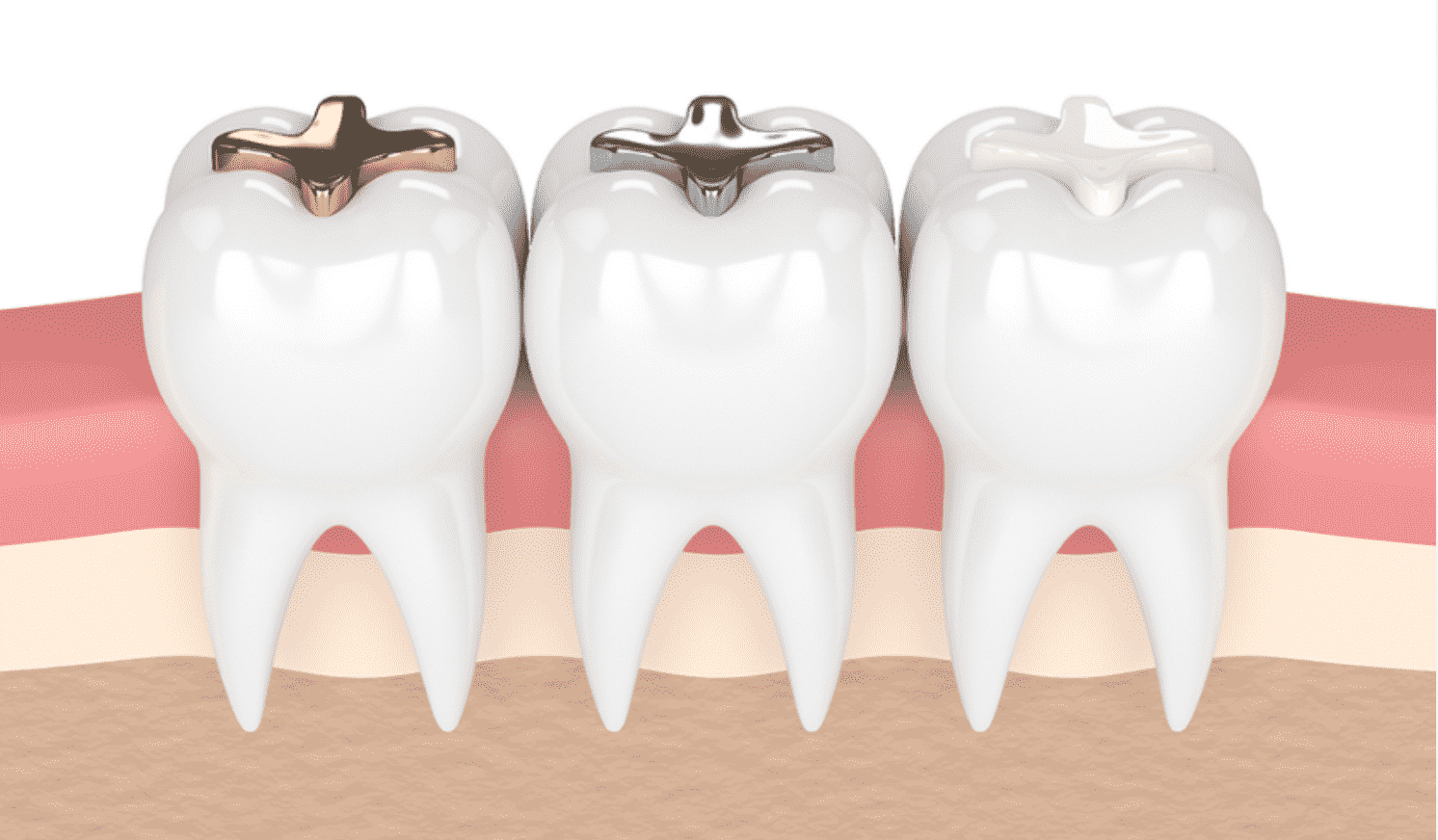Dental fillings are a common and essential dental procedure that is used to treat tooth decay, fractures, and other types of damage to teeth. They are necessary to help prevent further decay and protect the tooth from further damage. There are two main types of dental fillings: amalgam fillings and composite resin fillings.
Types of Dental Fillings
Amalgam Fillings
Dental amalgam is a dental filling material used to fill cavities caused by tooth decay. It is a mixture of metals, consisting of liquid (elemental) mercury and a powdered alloy composed of silver, tin, and copper. Dental amalgam has been used for more than 150 years in hundreds of millions of patients around the world. Dental amalgam fillings are strong and long-lasting, so they are less likely to break than some other types of fillings. They are also less expensive than other types of fillings. However, amalgam fillings are not as aesthetically pleasing as composite resin fillings, as they are silver in color and can darken over time. And some people may be allergic to mercury or other components used in dental amalgam fillings.

Composite Resin Fillings
Composite resin fillings, on the other hand, are made of a tooth-colored plastic and glass mixture. They are becoming increasingly popular due to their aesthetic appeal, as they can be color-matched to the surrounding teeth. They are also less likely to cause sensitivity than amalgam fillings. However, composite resin fillings are not as durable as amalgam fillings and may need to be replaced more frequently.

Process of Getting a Dental Filling
The process of getting a dental filling typically involves numbing the area around the tooth, removing the damaged portion of the tooth, and filling the cavity with the chosen filling material. The dentist will first clean the tooth and remove any decayed or damaged areas. They will then shape the cavity so that it can be easily filled. The filling material is then placed into the cavity and shaped to fit the tooth.

Care and Maintenance of Dental Fillings
Advancements in Dental Filling Materials and Technologies
In recent years, there have been advancements in dental filling materials and technologies. For example, nanocomposites (a type of composite resin) are being used to create dental fillings that may have greater durability and resistance to wear than traditional composite resins. Calcium silicate-based materials are also being studied for their potential to promote the regeneration of dental pulp tissue, which could potentially reduce the need for root canal treatment.

Additionally, computer-assisted design and manufacturing (CAD/CAM) systems are being used to create more accurate and precise dental restorations, including fillings. This technology allows dentists to create dental restorations on-site, which can reduce the need for multiple appointments and temporary restorations.
There is also a growing interest in the use of ozone gas as an adjunct to traditional dental filling materials. Ozone gas has been shown to have antimicrobial properties, which may help to reduce the risk of recurrent decay and improve the long-term success of dental fillings.
Conclusion
In conclusion, dental fillings are an essential dental procedure that is used to treat tooth decay, fractures, and other types of damage to teeth. Amalgam fillings and composite resin fillings are the two main types of dental fillings, each with their own advantages and disadvantages. With proper care and maintenance, dental fillings can last for many years. Advancements in dental filling materials and technologies, such as nanocomposites, calcium silicate-based materials, CAD/CAM systems, and ozone gas, are helping to improve the accuracy, durability, and long-term success of dental fillings. Regular dental check-ups and good oral hygiene practices are key to preventing the need for dental fillings in the future.



